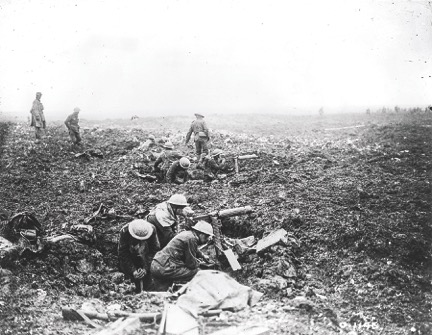Randy Evans, special to The Sarnia Journal
(2016) When Canada declared war on Germany in August, 1914 the country was little prepared for conflict.
Fully equipped, its belligerency capabilities consisted of a standing army of 3,110 men and a Minister of Militia in the person of Sam Hughes, a noticeable politician of questionable sanity at the best of times.
Even with the increase in numbers from initial recruiting efforts it is little wonder the commanding British Brass considered the arrivals from Canada colonial fodder whose units were best broken up and reassigned as reinforcements to others regiments. For the first two years of the war, and even after the Canadian force attained full army status, it didn’t fight together as a whole.
Enter Vimy Ridge, an imposing enemy stronghold located in the Arras sector of northern France, near the Belgium border. The Ridge was militarily strategic as it was the high ground that protected the enemy encampments in the Dumas Plain. The fact the Germans held this position was a point of considerable angst to the Allied High Command.
The Canadians were chosen to dislodge this impediment, a decision no doubt arrived at through the process of elimination and desired opportunity.
First, the British forces had been severely depleted by the monstrous losses in the Somme between July and November of 1916. The main focus of the French forces was the death pit of Verdun and revolts and insurrection among a noticeable number of its forces.
Second, the French in 1915 had attempted to capture Vimy with disastrous results. After suffering over 100,000 casualties the host nation apparently didn’t have the stomach to give it another go.
Third, Canadians fighting in smaller units had in the past showed their mettle – particularly on the Somme – and their reputation as a formidable fighting force had grown.
Fourth, and finally, Vimy Ridge provided the North American colonials – politicos, militarists, enlistees and public back home – a chance to show the British Brass what the Canadian army could do as a unified fighting unit.
From a nationalistic perspective, the timing couldn’t have been better.
“All we ask,” a member of the Canadian Scottish wrote his father, as recorded in Pierre Berton’s book Vimy “is that we should not be drafted with Regular Battalions…. We would be better off ourselves … we want to show by our own efforts that Canadians are as good as Territorial’s … That is why we want to be tried.”
And so it was that these circumstances came together to bring to the Ridge all Four Canadian Divisions to advance and fight together for the first time in the Great War.
The battle began in earnest on April 9, 1917. For four days the men fought the enemy and were wounded and killed. As our history books correctly account, we won.
Since then, the name Vimy Ridge has become synonymous with the concept of nationhood – how the battle elevated Canada from a mere British Colony to a nation in its own right.
On observing the capture of the Ridge, Canadian Brigadier General Alexander Ross said, “In those few minutes I witnessed the birth of a nation.”
Today, this romantic notion of Vimy generally prevails. But such is not right. Rather, the initial and foremost thought should be how the assault on Vimy Ridge resulted in 10,602 Canadian casualties and 3,598 dead.
“April 9, 1917 was the single bloodiest day of the entire war for the Canadian Corps and the bloodiest in all of Canadian military history: worse than Beaumont Hamel on July 1, 1916, worse than Dieppe on August 19, 1942, worse than D-Day on June 6, 1944; in fact worse than all three combined,” Tim Cook noted in his book Shock Troops.
For Sarnians, the name Vimy should remind us that four local youth died in the battle, and that Private Frederick Johnston remains interred at an unknown spot somewhere on that Ridge.
Perhaps the symbolism of nationhood is called for. But not in priority.
Let us first remember the sacrifice and loss.
Lest we forget.


